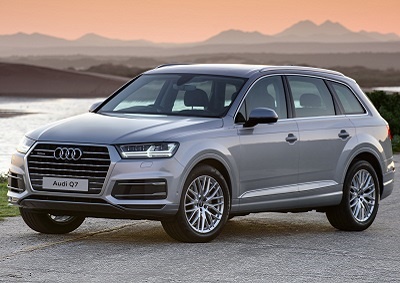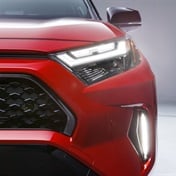
Cape Town - Large, luxurious, yet lighter and tauter the second generation Q7, Audi’s most advanced Q model ever is now in South Africa.
And right on cue, too – as its predecessor, having been around for a long nine years, was being completely outsold by the BMW X5, Merc’s spruced up GLE, and JLR’s Landy Discovery.
Also, while Audi has been performing well worldwide (with sales up by 3.5%) the brand is struggling locally, having lost more than 21% of market share in the last year.
'Q7 deserves better'
In light of this the automaker will rely heavily on the technologically advanced Q7 to re-establish the Four Rings’ credentials here, but unfortunately its market entry is overshadowed by the massive emissions scandal rocking the VW Group….
It’s a pity, really, because the new Q7 deserves better.
New Q7 at a glance:
• Second generation Q7 is slightly shorter and narrower than predecessor
• Lightweight construction saves 325kg (in five-door version) in weight over predecessor
• Despite its reduced exterior dimensions, the new Q7 has largest interior in its class
• Overhauled and more powerful 3.0 V6 turbodiesel for market launch
• Better performance, but fuel consumption reduced by up to 28%
• Newly developed eight-speed tiptronic gearbox and quattro permanent all-wheel drive
• Electromechanical steering standard and four-wheel steering optional
• Completely new MMI operating concept, numerous new connect services
• Wide range of driver assistance systems; widest offering in the segment
• Adaptive cruise control with traffic jam assist, pre-sense pedestrian recognition, rear cross-traffic assist and trailer manoeuvre assist
Sharp, clean lines
While slimmed down somewhat the latest incarnation of the flagship Q7 - at 5050mm in length, 1970mm in width and 1740mm in height – is still big, but it is 370mm shorter and 15mm narrower than its predecessor (with standard steel-sprung suspension) and its wheelbase has also been reduced by 10mm to 2990mm.
Ingolstadt’s new flagship SUV now features sharp, clean and clearly accentuated lines, the geometrical design language helping to reduce its visual bulk.
The bold three-dimensional single-frame grille and hexagonal LED headlights (matrix LED lights are optionally available), quite similar in design to the recently facelifted Q3, gives it presence and the side styling continues the play of lines.
A “blister line” segments the side panels and the heavily defined wheel arches accentuate the big wheels and tyres. The rear styling, characterized by three horizontal lines, is less convincing though.
Like its ungainly forbearer it still appears heavy and to sag behind the rear wheels somewhat, but on the newcomer this illusion is less pronounced.
Roomier, altered interior
Aerodynamic refinements, including the use of underbody cladding ensures a drag coefficient of 0.32 and despite reduced external dimensions the altered interior of the new Q7 offers more accommodation space.
Audi says the improved packaging added 21mm between the first and second rows seats with a respective 41mm and 23mm of head room. The third row of seats also has more head room (24mm) and shoulder room (20 mm).
You also sit noticeably higher in the newcomer due to the platform architecture designed to take a battery pack for the upcoming hybrid e-tron model.
If selected, the third row can be raised and lowered electrically and from next year customers can also choose to personalise the interior with Audi exclusive.
With seven travellers on board the new Q7 still offers 295 litres of storage space. The comfortable five-seater offers 890 litres, and 2075 litres with the second row seat backs folded down.
The attractive, contemporary styled interior is reminiscent of the latest TT, featuring the same digital instrument panel, a free-standing infotainment tablet and a prominent centre console with newly designed, bigger MMI controller and gear knob.
In the fashion of Volvo’s new XC90 the dashboard design lines are minimalistic (with no wood veneer in sight) – in contrast with the much more ornate executions in the X5 and especially the latest GLE.
Infotainment and connectivity
The Q7’s standard MMI navigation plus with MMI touch includes a rich array of equipment; a DVD drive, two card readers, a flash memory, Audi sound system, Audi music interface with two USB ports, a Bluetooth interface and the 8.3-inch high-resolution monitor. A 12.3-inch TFT screen is optional.
It also provides access to the smartphone voice control, displays emails from the cell phone and reads them out aloud.
Audiophiles can choose between optional sound systems from Bose or Bang & Olufsen with high-quality 3D sound.
A removable Audi tablet for rear seat entertainment can be connected to the MMI navigation plus system via Wi-Fi to access the functions menus and transfer data. It uses the Android operating system, and provides Internet access.
Lighter and lithe
The new Q7’s huge drop in kerb weight can be credited to a focused lightweight construction programme slashing 100kg from the suspension and 71kg from the body, with 24kg shed with the adoption of aluminium doors.
Further weight reductions have been made possible by the new electric architecture for the Q7 and refinements to the floorplan, with the use of more hot-formed high-strength steel and aluminium.
In total the seven-seater is now 240kg sprightlier than its bulky processor, while the five-seat version lost an unbelievable 325kg.
The only engine offered at launch is an overhauled version of the VW Group’s 3.0 TDI V6 turbodiesel now delivering 183kW of power and 600Nm of torque. According to Audi this affords it a 0-100km/h acceleration time of 6.3 seconds and a top speed of 234km/h, while it claims consumption of 5.7 litres/100km, and (now highly contentious) CO2 emissions of 149g/km.
From January 2016 a 2.0T FSI model with petrol engine (185kW and 370Nm of torque) will also be available in South Africa.
On road, off-road
The drivetrain of the new Q7 is 20kg lighter with a new torque-sensing quattro centre diff integrated in the eight-speed tiptronic gearbox, replacing the previous transfer case.
The auto ’box is exceptionally smooth, with quick and spontaneous shifting, while the engine is quiet and efficient even under load – ensuring a relaxed, comfortable drive.
A wheel selective torque control system – initiating precise braking intervention when a driving wheel bears an insufficient load while cornering – supplements the quattro drive, aiding the big Q’s handling.
Due to load shedding and a 50mm lower ground clearance it is also more precise, agile and stable in the curves – aided by the optional adaptive air suspension and four-wheel steering system.
With Audi’s drive select system and adaptive air suspension the ride position can be adjusted, lifting the body by 25mm in off-road mode, while in high-lift another 35mm is gained.
At speed the body automatically drops by 15mm to reduce drag and increase stability. This lowering threshold differs, depending on the mode set in Audi drive select.
Our test route included some dirt and off-road driving and while dynamically competent on gravel the park distance control’s interference (it switches off in off-road mode, but not in all-road mode) while negotiating mild obstacles was irritating.
However, it’s a minor complaint taking into account the overall versatility of the new Q.
Driver assist systems
The Q7 currently offers more driver assistance systems than any other competitor in its class. Standard systems include the attention assist system, hold assist, cruise control, an adjustable speed limiter, rear parking system, Audi pre-sense basic and Audi pre-sense city.
Optional assistance systems include adaptive cruise control, night vision assist, head up display, traffic jam assist, Audi active lane assist, collision avoidance assist, rear cross traffic assist, trailer manoeuvre assist and all-wheel steering.
At R924 000 (excluding CO2 tax), standard with the five year or 100 000km Audi Freeway Plan, available to extend to six years or 200 000km, the new Q7 costs very much the same as its primary rival, the BMW X5 Xdrive30d.
Comparatively the Merc GLE 350d currently goes for R964 000, the Discovery SVD6 3.0 HSE for R1 014 000, and the Volvo XC90 D5 Inscription for R893 900.
On its own merit the new Q7 demands serious consideration. How the current brouhaha around the Volkswagen Group will affect its sales remains to be seen…




 Publications
Publications
 Partners
Partners











